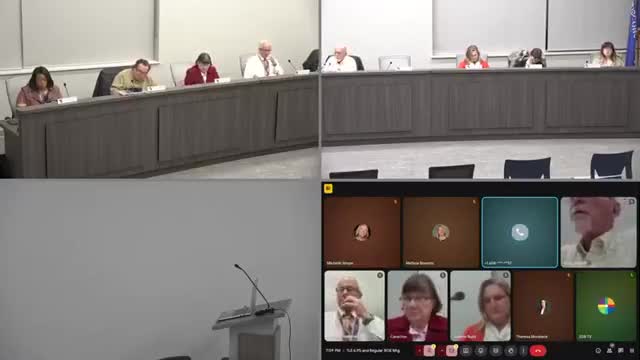Beloit report-card score edges up to 55.8 amid gains in growth; board flags elementary, absenteeism and staffing concerns
November 19, 2025 | Beloit School District, School Districts, Wisconsin

This article was created by AI summarizing key points discussed. AI makes mistakes, so for full details and context, please refer to the video of the full meeting. Please report any errors so we can fix them. Report an error »

Beloit School District's overall state report-card score improved to 55.8 for the reporting period presented Nov. 18, district staff told the board, reflecting gains in growth and targeted interventions even as some elementary sites slipped in category rankings.
"Overall our overall score is 55.8," the TLE presenter said, laying out how the state report card weights four priority areas and noting that growth counts for 45 percent of the overall score. The district reported increases across multiple growth and achievement measures, with notable growth among students with disabilities and Black/African American students in some grades.
The presentation highlighted specific gains: the district's growth score, building-level improvements at Aldridge, Gaston and Fruzan (each meeting expectations), and an increase in the four-year graduation rate from 79.5 percent to 82.9 percent.
But trustees and staff emphasized remaining risks. The presenter said third-grade reading showed a dip in some elementary schools and that absenteeism remains an ongoing problem: chronic absenteeism in the report period was 38.1 percent (down from 55.9 percent two years prior, according to the presentation).
"I'm afraid I don't quite agree with my colleague about how impressive this is," Trustee Carol Fox said, arguing the elementary schools' declines and low growth rates there require urgent attention. Several trustees and the interim superintendent flagged staff vacancies and turnover as key causes. "We have open positions where we're putting substitute teachers in. That is never going to be a positive experience," Interim Superintendent Wayne Anderson told the board, saying stability and teacher retention are priorities.
Board members asked for more work on aligning assessment calendars after testing-window problems and low participation in some high school assessments. The presenter said the district has rescheduled interrupted preACT sessions and is working with technology partners to avoid repeat issues.
The board heard that report-card methodology shifted this year (the state adjusted cut scores and reporting windows), which complicates year-to-year comparisons; the presenter urged focusing on growth trends and targeted supports for schools that slipped.
The district identified priorities going forward: raise elementary growth and third-grade reading outcomes, reduce chronic absenteeism through community partnerships, and sustain staff recruitment and retention to keep interventions and instruction consistent. Trustees directed staff to continue school-by-school analysis and to return with follow-up recommendations.
"Overall our overall score is 55.8," the TLE presenter said, laying out how the state report card weights four priority areas and noting that growth counts for 45 percent of the overall score. The district reported increases across multiple growth and achievement measures, with notable growth among students with disabilities and Black/African American students in some grades.
The presentation highlighted specific gains: the district's growth score, building-level improvements at Aldridge, Gaston and Fruzan (each meeting expectations), and an increase in the four-year graduation rate from 79.5 percent to 82.9 percent.
But trustees and staff emphasized remaining risks. The presenter said third-grade reading showed a dip in some elementary schools and that absenteeism remains an ongoing problem: chronic absenteeism in the report period was 38.1 percent (down from 55.9 percent two years prior, according to the presentation).
"I'm afraid I don't quite agree with my colleague about how impressive this is," Trustee Carol Fox said, arguing the elementary schools' declines and low growth rates there require urgent attention. Several trustees and the interim superintendent flagged staff vacancies and turnover as key causes. "We have open positions where we're putting substitute teachers in. That is never going to be a positive experience," Interim Superintendent Wayne Anderson told the board, saying stability and teacher retention are priorities.
Board members asked for more work on aligning assessment calendars after testing-window problems and low participation in some high school assessments. The presenter said the district has rescheduled interrupted preACT sessions and is working with technology partners to avoid repeat issues.
The board heard that report-card methodology shifted this year (the state adjusted cut scores and reporting windows), which complicates year-to-year comparisons; the presenter urged focusing on growth trends and targeted supports for schools that slipped.
The district identified priorities going forward: raise elementary growth and third-grade reading outcomes, reduce chronic absenteeism through community partnerships, and sustain staff recruitment and retention to keep interventions and instruction consistent. Trustees directed staff to continue school-by-school analysis and to return with follow-up recommendations.
View full meeting
This article is based on a recent meeting—watch the full video and explore the complete transcript for deeper insights into the discussion.
View full meeting
